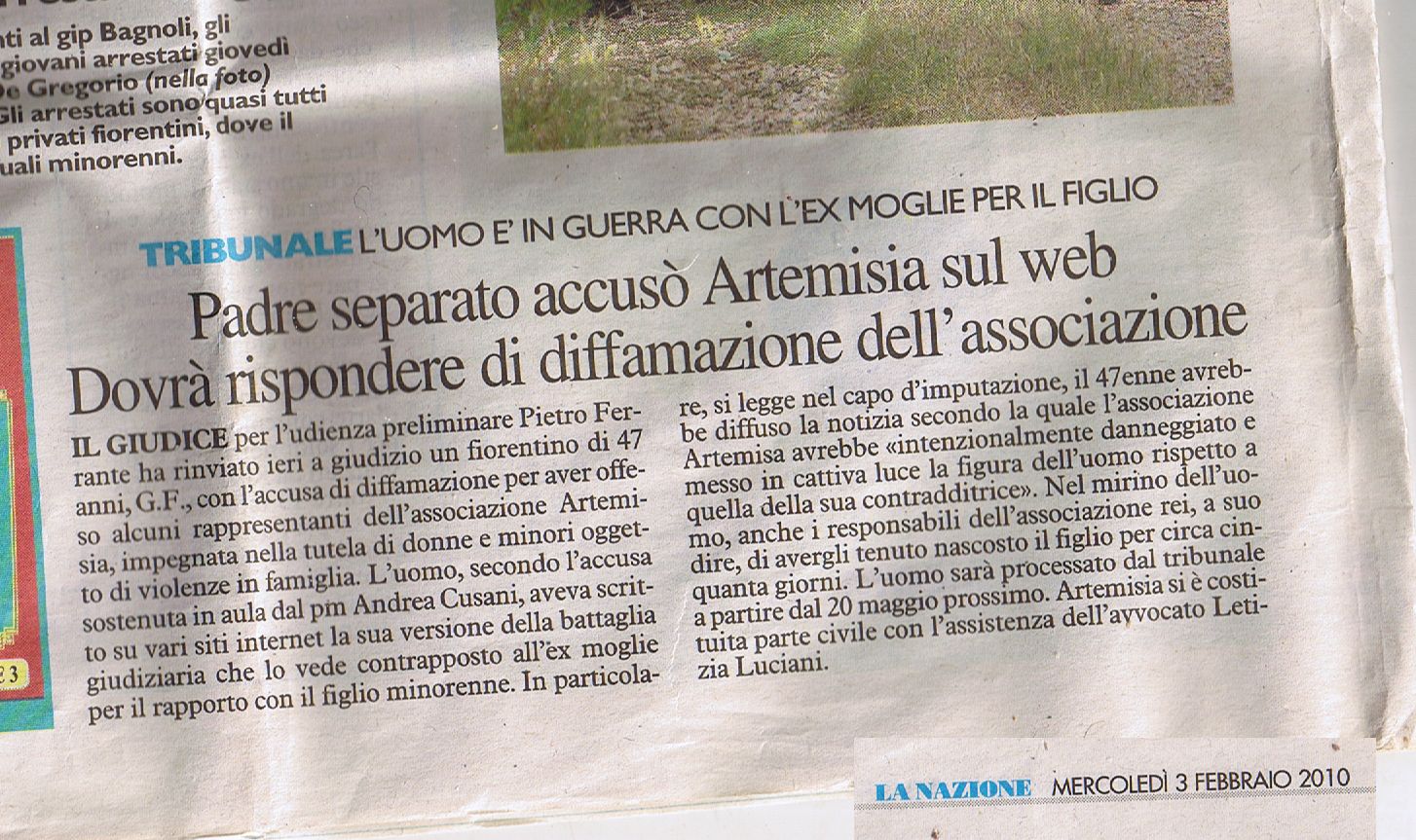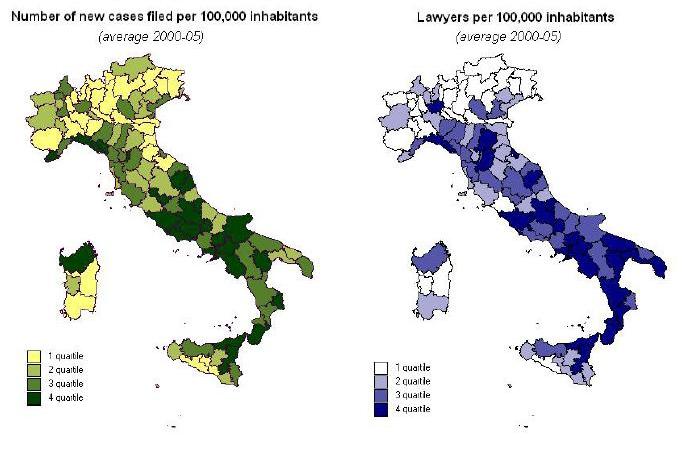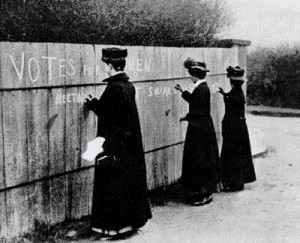 In questo articolo il prof. Murray Straus, uno dei massimi esperti mondiali in materia di violenza domestica, descrive i metodi criminali usati da femministe per far credere che gli uomini siano più violenti delle donne.
In questo articolo il prof. Murray Straus, uno dei massimi esperti mondiali in materia di violenza domestica, descrive i metodi criminali usati da femministe per far credere che gli uomini siano più violenti delle donne.
Grazie a questa totale falsificazione della realtà una donna violenta può assumere una spietata avvocata nazifemminista, accusare falsamente il marito di violenza, guadagnarsi un processo dove la vittima rischia di venire condannata sulla base del nulla, mentre la criminale, con l’aiuto della giustizia deviata, può alienare ed abusare dei figli.
L’articolo è pubblicato su European Journal on Criminal Policy and Research 13 (2007) 227-232.
Metodo 1. Nascondere l’evidenza.
Fra i ricercatori non allineati all’ideologia molti (incluso e me alcuni colleghi) hanno nascosto risultati che mostrano che uomini e donne sono violenti in egual misura per evitare di diventare vittime di accuse al vitriolio ed ostracismo. Quindi molti ricercatori hanno pubblicato solo dati su maschi violenti e femmine vittime, omettendo deliberatamente maschi vittime e femmine violente
Metodo 2. Evitare di ottenere dati inconsistenti con la teoria della “dominazione patriarcale”.
Nelle indagini statistiche, questo metodo di manipolazione consiste nel chiedere alle donne delle violenze subite da uomini, ma evitare di chiedere se hanno commesso violenze.
Metodo 3. Citare solo studi in cui gli uomini sono violenti.
Potrei elencare moltissimi articoli che hanno citato articoli in maniera selettiva, ma invece mostrerò come questo processo di inganno e distorsione è istituzionalizzato in documenti ufficiali di governi, ONU, OMS.
Metodo 4. Concludere che i risultati supportano l’ideologia femminista quando ciò è falso.
Gli studi citati sopra, oltre ad illustrare la citazione selettiva, contengono anche esempi di adesione ideologica che porta i ricercatori a interpretare falsamente i propri dati.
Metodo 5. Creare evidenza per citazione.
 È quello che Gelles ha chiamato “effetto woozle” [un animale inesistente dei cartoni animati di Winnie the Pooh]: si crea quando numerose citazioni di pubblicazioni passate che non contengono evidenze scientifiche ci ingannano nel credere che questa evidenza esista.
È quello che Gelles ha chiamato “effetto woozle” [un animale inesistente dei cartoni animati di Winnie the Pooh]: si crea quando numerose citazioni di pubblicazioni passate che non contengono evidenze scientifiche ci ingannano nel credere che questa evidenza esista.
Metodo 6. Ostruire pubblicazioni e levare i fondi a ricerche che potrebbero contraddire l’idea che la dominanza maschile sia la causa della violenza domestica.
Ho documentato un caso in cui una pubblicazione è stata bloccata, ma credo che capiti spesso. Il caso più frequente è la auto-censura di autori che temono che i risultati possano danneggiare la propria reputazione, e, nel caso degli studenti, la possibilità di trovare un lavoro.
Un esempio di blocco di fondi è la proposta di investigazione del 2005 del National Institute of Justice: il bando diceva che non era permesso studiare la violenza sugli uomini.
Metodo 7. Minacciare, assalire e penalizzare i ricercatori che producono risultati scientifici contrari all’ideologia femminista.
Suzanne Steinmetz fece l’errore di pubblicare un libro ed articoli che chiaramente mostravano come uomini e donne fossero violenti in egual misura. L’odio si concretizzò in minacce di bombe al matrimonio di sua figlia, è stata vittima di una campagna per negarle il posto e stroncarle la carriera universitaria. 20 anni dopo lo stesso è accaduto ad un ricercatore la cui tesi dimostrò che uomini e donne sono violenti in egual misura: gli hanno impedito la promozione ed il posto. Nella mia esperienza, una delle mie studentesse è stata minacciata ad una conferenza che mai avrebbe trovato un posto se avesse fatto il dottorato con me. All’università del Massachusetts, mi hanno impedito di parlare con urla e violenze.
CONCLUSIONI
I 7 metodi sopra descritti hanno creato un clima di paura che ha inibito la ricerca e la pubblicazione dei dati che mostrano che uomini e donne sono violenti in egual misura, e spiegano come mai l’ideologia femminista ed il loro modo di agire ha persistito per 30 anni, nonostante centinaia di studi che dimostrano la molteplicità dei fattori di rischio per la violenza.
 L’autore è professore di sociologia e co-direttore del Family Research Laboratory, University of New Hampshire.
L’autore è professore di sociologia e co-direttore del Family Research Laboratory, University of New Hampshire.
Fonti:
- http://pubpages.unh.edu/~mas2/V74-gender-symmetry-with-gramham-Kevan-Method%208-.pdf
- http://www.renewamerica.com/columns/roberts/070312
Originale in inglese
PROCESSES EXPLAINING THE CONCEALMENT AND DISTORTION OF EVIDENCE ON GENDER SYMMETRY IN PARTNER VIOLENCE
Graham-Kevan’s paper fully documents overwhelming evidence that the “patriarchal dominance” theory of partner violence (PV from here on) explains only a small part of PV. Moreover, more such evidence is rapidly emerging. To take just one recent example, analyses of data from 32 nations in the International Dating Violence Study (Straus, 2007) Straus and International Dating Violence Research Consortium 2004) found about equal perpetration rates and a predominance of mutual violence in all 32 samples, including non-western nations.
Moreover, data from that study also show that, within a couples relationship, domination and control by women occurs as often as by men and are as strongly associated with perpetration of PV by women as by men (Straus 2007) Graham- Kevan also documents the absence of evidence indicating that the patriarchal dominance approach to prevention and treatment has been effective. In my opinion, it would be even more appropriate to say that what success has been achieved in preventing and treating PV has been achieveddespite the handicaps imposed by focusing exclusively on eliminating male-dominance and misogyny, important as that is as an end in itself.
Graham-Kevan’s paper raises the question of how an explanatory theory and treatment modality could have persisted for 30 years and still persists, despite hundreds of studies which provide evidence that PV has many causes, not just male-dominance. The answer is that it emerged from a convergence of a number of different historical and social factors. One of these is that gender symmetry in perpetration of partner violence is inconsistent with male predominance in almost all other crimes, especially violent crimes. Another is the greater injury rate suffered by female victims of PV brings female victimization to public attention much more often.
Although there are many causes of the persistence of the patriarchal dominance focus, I believe that the predominant cause has been the efforts of feminists to conceal, deny, and distort the evidence. Moreover, these efforts include intimidation and threats, and have been carried out not only by feminist advocates and service providers, but also by feminist researchers who have let their ideological commitments overrule their scientific commitments.
At the same time, it is important to recognize the tremendous contribution to human relationships and crime control made by feminist efforts to end violence against women. This effort has brought public attention the fact that PV may be the most prevalent fom1 of interpersonal violence, created a world~wide detem1ination to cease ignoring PV, and take steps to combat PV. It has brought the rule of law to one of the last spheres of life where ‘self-help’ justice (Black 1983) prevails by changing the legal status of domestic assaults, by changing police and court practices from one of ignoring and minimization PV to one of compelling the criminal justice system to attend and intervene.
In addition, feminists have created two important new social institutions: shelters for battered women and treatment programs for male perpetrators. However, the exclusive focus on male perpetrators and the exclusive focus on just one of the many causes has stymied this extension of the rule of law and the effort to end domestic violence. Ironically, it has also handicapped eff0rts to protect women from PV and end PV by men (Feld and Straus 1989; Medeiros and Straus 2006; Straus 2007; Straus and Scott, in press). Consequently, information on how this could have occurred can be helpful in bringing about a change. This commentary identifies seven of the methods.
Methods Used to Conceal and Distort Evidence on Symmetry in Partner Violence
Method 1. Suppress Evidence
Researchers who have an ideological commitment to the idea that men are almost always the sole perpetrator often conceal evidence that contradicts this belief. Among researchers not committed to that ideology, many (including me and some of my colleagues) have withheld results showing gender symmetry to avoid becoming victims of vitriolic denunciations and ostracism (see Method 7 below). Thus, many researchers have published only the data on male perpetrators or female victims, deliberately omitting data on female perpetrators and male victims.
This practice started with one of the first general population surveys on family violence. The survey done for the Kentucky Commission on the Status of Women obtained data on both men and women, but only the data on male perpetration was published (Schulman 1979). Among the many other examples of respected researchers publishing only the data on assaults by men are Kennedy and Dutton (1989); Lackey and Williams (1995); Johnson and Leone (2005); and Kaufman Kantor and Straus (1987).
Method 2. Avoid Obtaining Data Inconsistent with the Patriarchal Dominance Theory
In survey research, this method of concealment asks female participants about attacks by their male partners and avoids asking them if they had hit their male partner. The Canadian Violence against Women survey (Johnson and Sacco 1995), for example, used what can be called a feminist version of the Conflict Tactics Scales to measure PY. This version omitted the questions on perpetration by the female participants in the study. For the US National Violence against Women Survey (Tjaden and Thoennes 2000), the US Department of Justice originally planned the same strategy. Fortunately, the US Centers for Disease Control added a sample of men to the project. But when Johnson and Leone (Johnson and Leone 2005) investigated the prevalence of “intimate terrorists” among the participants in that study, they guaranteed there would be no female intimate terrorists by using only the data on male perpetrators.
For a lecture in Montreal, I examined 12 Canadian studies. Ten of the 12 reported only assaults by men. The most recent example occurred in the spring of 2006 when a colleague approached the director of a university survey center about conducting a survey of partner violence if a recently submitted grant was awarded. A faculty member at that university objected to including questions on female perpetration, and the center director said he was not likely to do the survey if the funds were awarded.
Method 3. Cite Only Studies That Show Male Perpetration
I could list a large number of journal articles showing selective citation, but instead I will illustrate the process with official document examples to show that this method of concealment and distortion is institutionalized in publications of governments, the United Nations, and the World Health Organization. For example, US Dept. of Justice publications almost always cite only the National Crime Victimization study, which shows male predominance (Durose et al. 2005). They ignore the Department of Justice published critiques, which led to a revision of the survey to correct that bias. However, the revision was only partly successful (Straus 1999), yet they continue to cite it and ignore other more accurate studies they have sponsored which show gender symmetry.
After delaying release of the results of the National Violence against Women for almost two years, the press releases issued by the Department of Justice provided only the “life- time prevalence” data and ignored the “past-year prevalence” data, because the lifetime data showed predominantly male perpetration, whereas the more accurate past-year data showed that women perpetrated 40% of the partner assaults.
The widely acclaimed and influential World Health Organization report on domestic violence (Krug et al. 2002) reports that “Where violence by women occurs it is more likely to be in the form of self defense. (32, 37, 38).” This is selective citation because almost all studies that have compared men and women find about equal rates of self-defense. Perhaps even worse, none of the three studies cited provide evidence supporting the quoted sentence. Study #32 (Saunders 1986) shows that 31% of minor violence and 39% of severe was in self defense, i.e., about two-thirds of female perpetrated PV was not in self defense. Study #37 (DeKeseredy et al. 1997) found that only 7% of women said their violence was in self defense. Study #38 (Johnson and Ferraro 2000) is a review paper that has no original data. It cites #32 and #37, neither of which supports the claim.
Method 4. Conclude That Results Support Feminist Beliefs When They Do Not
The studies cited above, in addition to illustrating selective citation, there are also examples of the ability of ideological commitment to lead researchers to misinterpret the results of their own research. A study by Kernsmith (2005), for example, states that “Males and females were found to differ in their motivations for using violence in relationships and that “female violence may be more related to maintaining personal liberty in a relationship than gaining power” (p. 180). However, although Kernsmith’s Table 2 shows that women had higher scores on the “striking back” factor, only one question in this factor is about self defense.
The other questions in the factor are about being angry and coercing the partner. So, despite naming the factor as “striking back” it is mostly about anger and coercion. Therefore, the one significantly different factor shows that women more than men are motivated by anger at the partner and by efforts to coerce the partner. In addition, Kernsmith’s conclusion ignores the fact that the scores for men and women were approximately equal in respect to two of the three factors (“exerting power” and “disciplining partner”). Thus, Kernsmith’s study found the opposite of what was stated as the finding.
Method 5. Create Evidence by Citation
The Kernsmith study, the World Health Organization report, and the pattern of selective citation show how ideology can be converted into what can be called “evidence by citation” or what Gelles (1980) calls the “woozle effect.” A woozle effect occurs when frequent citation of previous publications that lack evidence mislead us into thinking there is evidence. For example, subsequent to the World Health Organization study and the Kernsmith study, papers discussing gender differences in motivation will cite them to show that female violence is predominantly in self-defence, which is the opposite of what the research actually shows. But because these are citations of an article in a scientific journal and a respected international organization, readers of the subsequent article will accept it as a fact. Thus, fiction is converted into scientific evidence that will be cited over and over. Another example is the claim that the Conflict Tactics Scales (Straus et al. 1996) does not provide an adequate measure of PV because it measures only conflict related violence.
Although the theoretical basis of the CTS is conflict theory, the introductory explanation to participants specifically asks participants to report expressive and malicious violence. It asks respondents about the times when they and their partner “[…]disagree, get annoyed with the other person, want different things from each other, or just have spats or fights because they are in a bad mood, are tired or for some other reason.” Despite repeating this criticism for 25 years in perhaps a hundred publications, none of those publications has provided empirical evidence showing that only conflict-related violence is reported. In fact, where there are both CTS data and qualitative data, as in Giles- Sims (1983), it shows that the CTS elicits malicious violence as well as conflict-related violence. Nevertheless, because there are at least a hundred articles with this statement in peer reviewed journals, it seems to establish as a scientific fact what is only an attempt to blame the messenger for the bad news about gender symmetry in PV.
Method 6. Obstruct Publication of Articles and Obstruct Funding Research That Might Contradict the Idea that Male Dominance Is the Cause of PV
I have documentation for only one case of publication being blocked, but I think this has often happened. The more frequent pattern is self-censorship by authors fearing that it will happen or that publication of such a study will undcrn1ine thcir reputation, and, in the case of graduate students, the ability to obtain a job.
An example of denying funding to research that might contradict the idea that PV is a male-only crime is the call for proposals to investigate partner violence issued in December 2005 by the National Institute of Justice. The announcement stated that proposals to investigate male victimization would not be eligible. Another example is the objection by a reviewer to a proposal a colleague and I submitted because of our “[…] naming violence in a relationships as a ‘human’ problem of aggression not a gender-based problem.” When priority scores by the reviewers are averaged, it takes only one extremely low score to place the proposal below the fundable level. Others have encountered similar blocks; for example Holtzworth-Munroe (2005). Eugen Lupri, a pioneer Canadian family violence researcher, has also documented examples of the resistance to funding and publishing research on female perpetrated violence (Lupri 2004).
Method 7. Harass, Threaten, and Penalize Researchers Who Produce Evidence That Contradicts Feminist Beliefs
Suzanne Steinmetz made the mistake of publishing a book and articles (Steinmetz 1977, 1977-1978) which clearly showed about equal rates of perpetration by males and females. Anger over this resulted in a bomb threat at her daughters’ wedding, and she was the object of a letter writing campaign to deny her promotion and tenure at the University of Delaware. Twenty years later the same processes resulted in a lecturer at the University of Manitoba whose dissertation found gender symmetry in PV being denied promotion and tenure. My own experiences have included having one of my graduate students being warned at a conference that she will never get a job if she does her PhD research with me. At the University of Massachusetts, I was prevented from speaking by shouts and stomping. The chairperson of the Canadian Commission on Violence against Women stated at two hearings held by the commission that nothing that Straus publishes can be believed because he is a wife-beater and sexually exploits students, according to a Toronto Magazine article. When I was elected President of the Society for the Study of Social Problems and rose to give the presidential address, a group of members occupying the first few rows of the room stood up and walked out.
Concluding Comments
The seven methods described above have created a climate of fear that has inhibited research and publication on gender symmetry in PV and largely explain why an ideology and treatment modality has persisted for 30 years, despite hundreds of studies which provide evidence on the multiplicity of risk factors for PV, of which patriarchy is only one. Because of space limitations and because I am a researcher not a service provider, I have not covered the even greater denial, dist0l1ion and coercion in prevention and treatment efforts. An example is the director of a battered women’s shelter who was tern1inated because she wanted to ask the residents whether they had hit their partner and the context in which that occurred. An example of governmental coercion of treatment is the legislation in a number of US states, and policies and funding restrictions in almost all US states that prohibit couple therapy for PV. Finally, it was painful for me as feminist to write this commentary.
I have done so for two reasons. First, I am also a scientist and, for this issue, my scientific commitments override my feminist commitments. Perhaps even more important, I believe that the safety and well-being of women requires efforts to end violence bywomen and the option to treat partner violence in some cases as a problem of psychopathology, or in the great majority of cases, as a family system problem (Straus and Scott, in press; Hamel and Nicholls 2006).
References
Black, D. (1983). Crime as social~control. American Sociological Review, 48(1), 34—45. DeKeseredy, W. S., Saunders, D. G., Schwartz, M. D., & Shahid, A. (1997). The meanings and motives for women’s use of violence in Canadian college dating relationships: Results from a National Survey. Sociological Spectrum, 17, 199-222.
Durose, M. R., Wolf Harlow, c.. Langan, P. A.• Motivans, M., Rantala. R. R., & Smith, E. L. (2005). Fami(v violence statistics inell/ding statistics on strangers alld acquaintances (No. NCJ 207846). Washington, DC.: U.S. Department of Justice, Office ofjustice Programs, Bureau of lustic Statistics.
Feld, S. L, & Straus, M. A. (1989). Escalation and desistance ofwife assault in marriage.Crimif101ogy, 27 (1),141-161.
Gelles, R. J. (1980). Violence in the family: A review of research in the seventies. JournalofMarriage and the Fami(v, 42, 873-885.
GilesMSims, J. (1983). W{fe batlering: A :,~vstems theo’}’ approach. New York: Guilford Press. Hamel. 1., & Nicholls, T. (Eds.). (2006). Family approaches in domestic violence: A practitioner’s guide to
gender~inclusive research and treatment: Springer. Holtzworth-Munroe, A. (2005). Female perpetration of physical aggression against an intimate partner: A
controversial new topic of study. Violence and Victims, 20(2), 251~259. Johnson, H., & Sacco, V. F. (1995). Researching violence against women: Statistics canada’s national survey.
Canadian Journal 0.( Criminology, 281-304, July. Johnson, M. P., & Ferraro, K. J. (2000). Research on domestic violence in the 1990′s: Making distinctions.
JOl/rnal ofMarriage and the Fami(v, 62(4). 948-963. Johnson, M. P., & Leone, J. M. (2005). The differential effects of intimate terrorism and situational couple
violence – findings from the national violence against women survey. Journal OfFamilyIssues, 26(3),
322-349. Kaufman Kantor, G., & Straus, M. A. (1987). The dnmken bum theory ofwife beating. Social pJ’oblems, 34,
213-230. Kennedy, L. W., & Dutton, D. G. (1989). The incidence of wife assault in alberta.Canadian JOl/mal of
Behavioral Science. 21( I). 40-54. Kemsmith, P. (2005). Exerting power or striking back: A gendered comparison of motivations for domestic
violence perpetration. Victims and Violence, 20(2), 173~I85. Krug, E. G., Dahlberg, L. L., Mercy. J. A., Zwi. A. B., Lozano, R., & World Health Organization. (2002).
World report 011 violence and health. Geneva: World Health Organization. Lackey, c., & Williams, K. R. (1995). Social bonding and the cessation of partner violence across
generations. Journal o f Marriage and the family, 57, 295~305. Lupri, E. (2004). Institutional resistance to acknowledging intimate male abuse, Counter-Roundtable
Conference on Domestic Violence. Calgary, Alberta, Canada. Medeiros, R. A, & Straus, M. A. (2006). Risk factors for physical violence between dating partners:
Implications for gender-inclusive prevention and treatment of family violence. In J. C. Hamel & T. Nicholls (Eds.), Family approaches to domestic violence: A practioners gUide to gender-inclusive research and treatment. Springer (also available at http://pubpages.unh.edu/-mas2).
Saunders, D. G. (1986). When battered women use violence: Husband-abuse or self~defense?Violence and Victims, 1(1),47-60.
Schulman, M. (1979). A survey of spoIlsal violence aqains! lvomen il/ Kentucky.Washington, DC: U.S. Govemment Printing Office.
Steinmetz, S. K. (1977). The cycle o f violence: Assertive, aggressive, and abusive fami(v illtaaction. New York: Praeger.
Steinmetz, S. K. (1977-1978). The battered husband syndrome. Victim%gy. 2, 499-509. Straus, M. A. (1999). The controversy over domestic violence by women: A methodological, theoretical, and sociology of science analysis. In X. Arriaga & S. Oskamp (Eds.), Violence in intimate
relationships (pp. 17..-44). Thousand Oaks, CA: Sage. Straus, M. A., (2007) Dominance and synnnetry in partner violence by male and female University
Students in 32 nations, Children and YOUtl1 Services Re,iew , do; 10.lOl6/j.childyouth.2007.1O.004
Straus, M. A., & International Dating ViOlence Kcsearch ConsortIUm. (2004). Prevalence ot VIOlence against dating partners by male and female university students worldwide.Violence Against Women, 10(7), 790-811.
Straus, M. A., & Scott, K. (In press). Gender symmetry in partner violence: The evidence, the denial, and the implications for primary prevention and treatment. In J. R. Lutzker & D. J. Whitaker (Eds.), Prevention ofpartner violence. Washington D.C. : American Psychological Association.
Straus, M. A., Hamby, S. L., Boney-McCoy. S.• & Sugarman, D. B. (1996). The revised conflict tactics scales (CTS2): Development and preliminary psychometric data. Journalof Fami(v Issues, 17(3), 283-316.
Tjaden, P., & Thoennes, N. (2000). Full report (~(the prevalence, incidence, and consequences ofviolence against women: Findings fiv11I the national violence against women survey (No. NCJ 183781). Washington, DC: U.S. Department of Justice, Office of Justice Programs.










 «Nei centri anti-violenza le donne sono interrogate senza attenzione od interesse riguardo all’autenticità delle loro accuse. Le operatrici femministe si interessano a fare un “profilo” dell’uomo accusato, in maniera da assicurarsi che i pregiudizi standard sulla “condotta abusiva” siano inclusi nelle dichiarazioni della vittima e nei documenti legali. Il maschio deve essere dipinto secondo il profilo classico dell’abusante. L’uomo accusato può non aver mai picchiato, minacciato o insultato la moglie, ma una volta “profilato” diventa obbiettivo legale. “Abuso del sistema giudiziario” descrive bene l’addestramento e gli sforzi di falsificazione messi in atto dalle femministe che operano in molti centri anti-violenza.
«Nei centri anti-violenza le donne sono interrogate senza attenzione od interesse riguardo all’autenticità delle loro accuse. Le operatrici femministe si interessano a fare un “profilo” dell’uomo accusato, in maniera da assicurarsi che i pregiudizi standard sulla “condotta abusiva” siano inclusi nelle dichiarazioni della vittima e nei documenti legali. Il maschio deve essere dipinto secondo il profilo classico dell’abusante. L’uomo accusato può non aver mai picchiato, minacciato o insultato la moglie, ma una volta “profilato” diventa obbiettivo legale. “Abuso del sistema giudiziario” descrive bene l’addestramento e gli sforzi di falsificazione messi in atto dalle femministe che operano in molti centri anti-violenza.








 Si è affacciato da poco nella letteratura psicologica italiana il parametro concettuale della Sindrome di Alienazione Genitoriale (Parental Alienation Syndrome – PAS), così definita dallo psicologo forense Richard Gardner, della Columbia University di New York, all’inizio degli anni Ottanta.
Si è affacciato da poco nella letteratura psicologica italiana il parametro concettuale della Sindrome di Alienazione Genitoriale (Parental Alienation Syndrome – PAS), così definita dallo psicologo forense Richard Gardner, della Columbia University di New York, all’inizio degli anni Ottanta.
 Una decina di anni addietro fece scalpore una sentenza penale che condannava un genitore ad un anno e mezzo di reclusione, oltre al risarcimento dei danni all’ex coniuge. Il padre, affidatario di due figlie minori che rifiutavano qualunque relazione con la madre, veniva così sanzionato per non aver educato le bambine a sentimenti positivi nei confronti di quest’ultima.
Una decina di anni addietro fece scalpore una sentenza penale che condannava un genitore ad un anno e mezzo di reclusione, oltre al risarcimento dei danni all’ex coniuge. Il padre, affidatario di due figlie minori che rifiutavano qualunque relazione con la madre, veniva così sanzionato per non aver educato le bambine a sentimenti positivi nei confronti di quest’ultima. La
La  Quando si sottrae un figlio ad un genitore si sopprime quella parte fondante della sua individualità che si è formata nel momento in cui è diventato qualcosa che prima non esisteva. La sua individualità è mutata, arricchendosi di un’identità genitoriale. Impedirgli di essere genitore equivale a sopprimere un aspetto vitale di sé, essenziale per continuare a dare un senso alla vita.
Quando si sottrae un figlio ad un genitore si sopprime quella parte fondante della sua individualità che si è formata nel momento in cui è diventato qualcosa che prima non esisteva. La sua individualità è mutata, arricchendosi di un’identità genitoriale. Impedirgli di essere genitore equivale a sopprimere un aspetto vitale di sé, essenziale per continuare a dare un senso alla vita.  L’esito fu il varo della legge 54/2006 – cd dell’affido condiviso – che capovolge il concetto fino ad allora vigente: non più la tutela dell’interesse dell’adulto, ma l’interesse del bambino quale soggetto di diritti. Ed introduce il principio della Bigenitorialità (termine coniato dalla Gesef nel 1999) quale diritto inalienabile del minore al rapporto continuativo e significativo con entrambi i genitori, su cui si articolano le disposizioni inerenti le responsabilità genitoriali.
L’esito fu il varo della legge 54/2006 – cd dell’affido condiviso – che capovolge il concetto fino ad allora vigente: non più la tutela dell’interesse dell’adulto, ma l’interesse del bambino quale soggetto di diritti. Ed introduce il principio della Bigenitorialità (termine coniato dalla Gesef nel 1999) quale diritto inalienabile del minore al rapporto continuativo e significativo con entrambi i genitori, su cui si articolano le disposizioni inerenti le responsabilità genitoriali.



